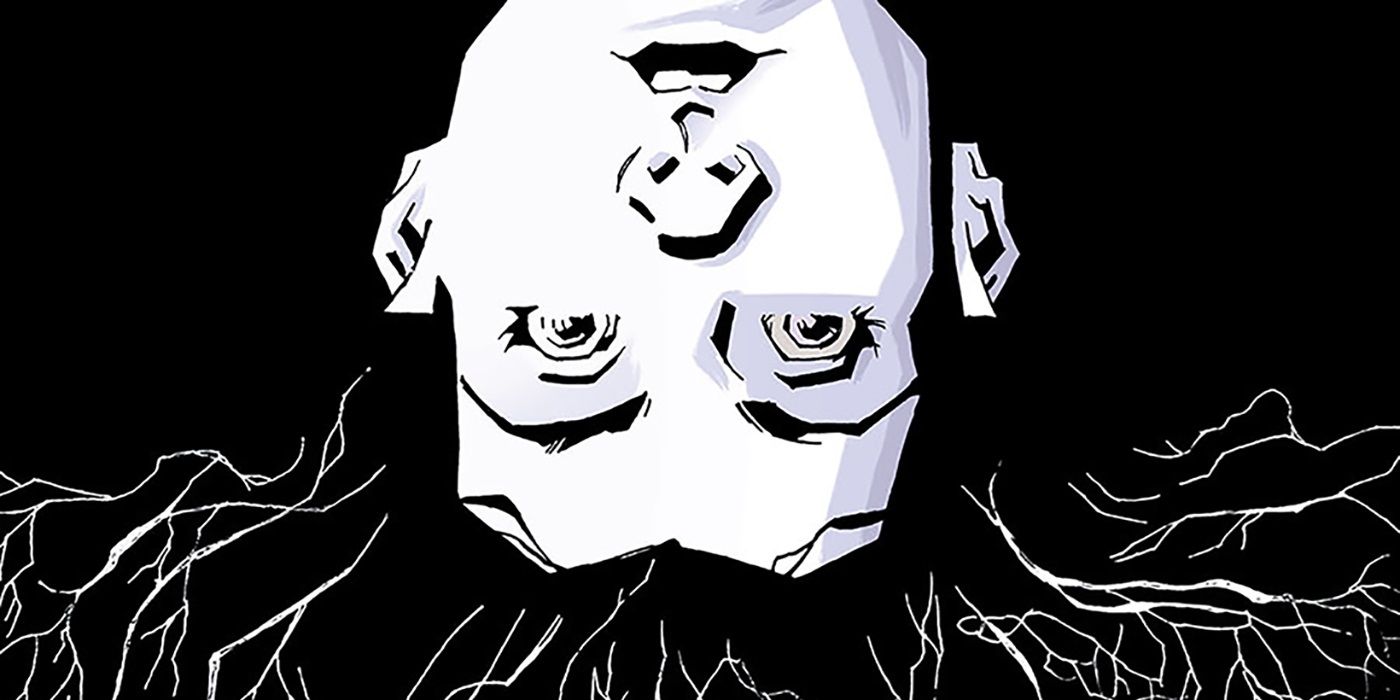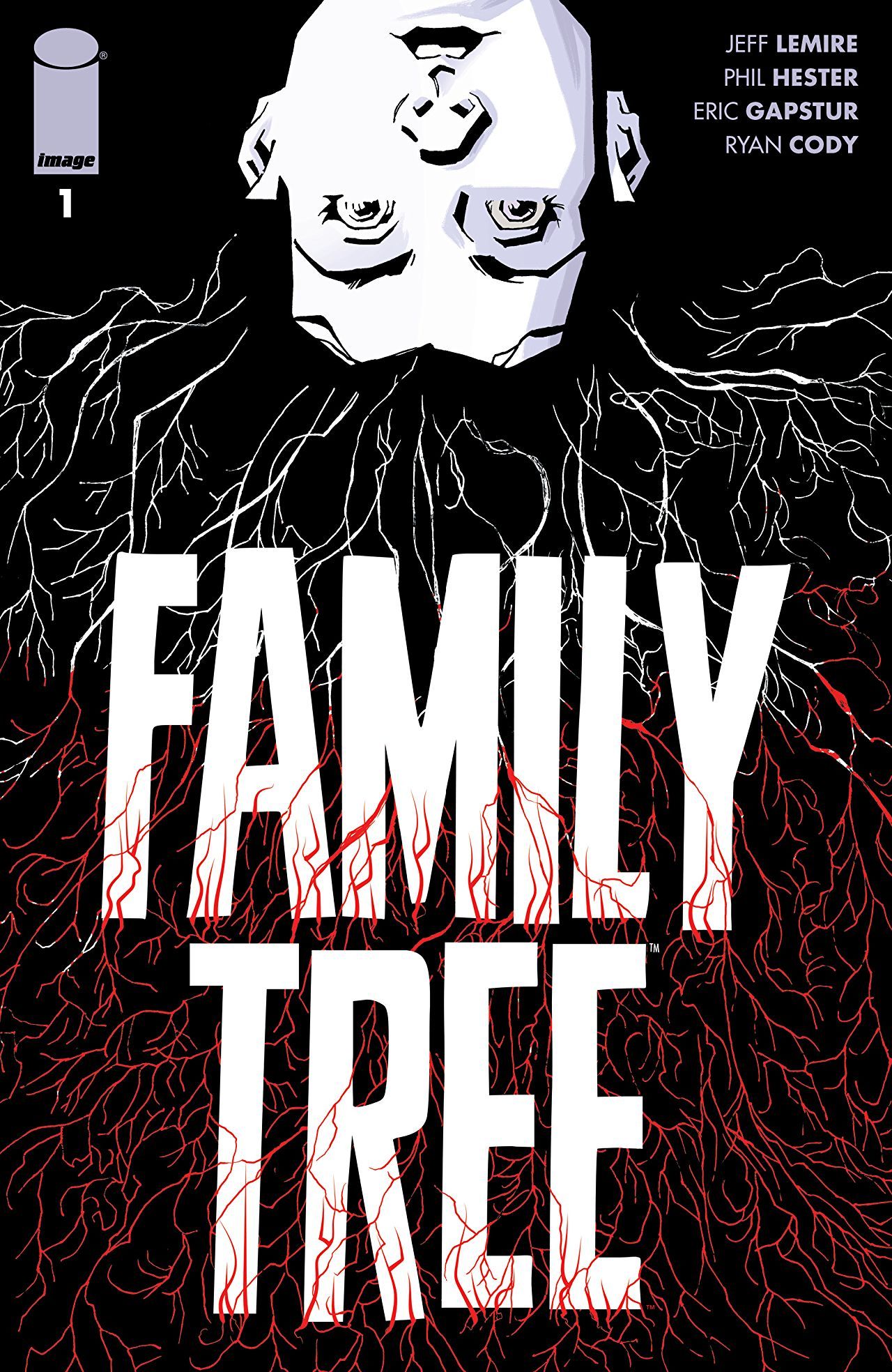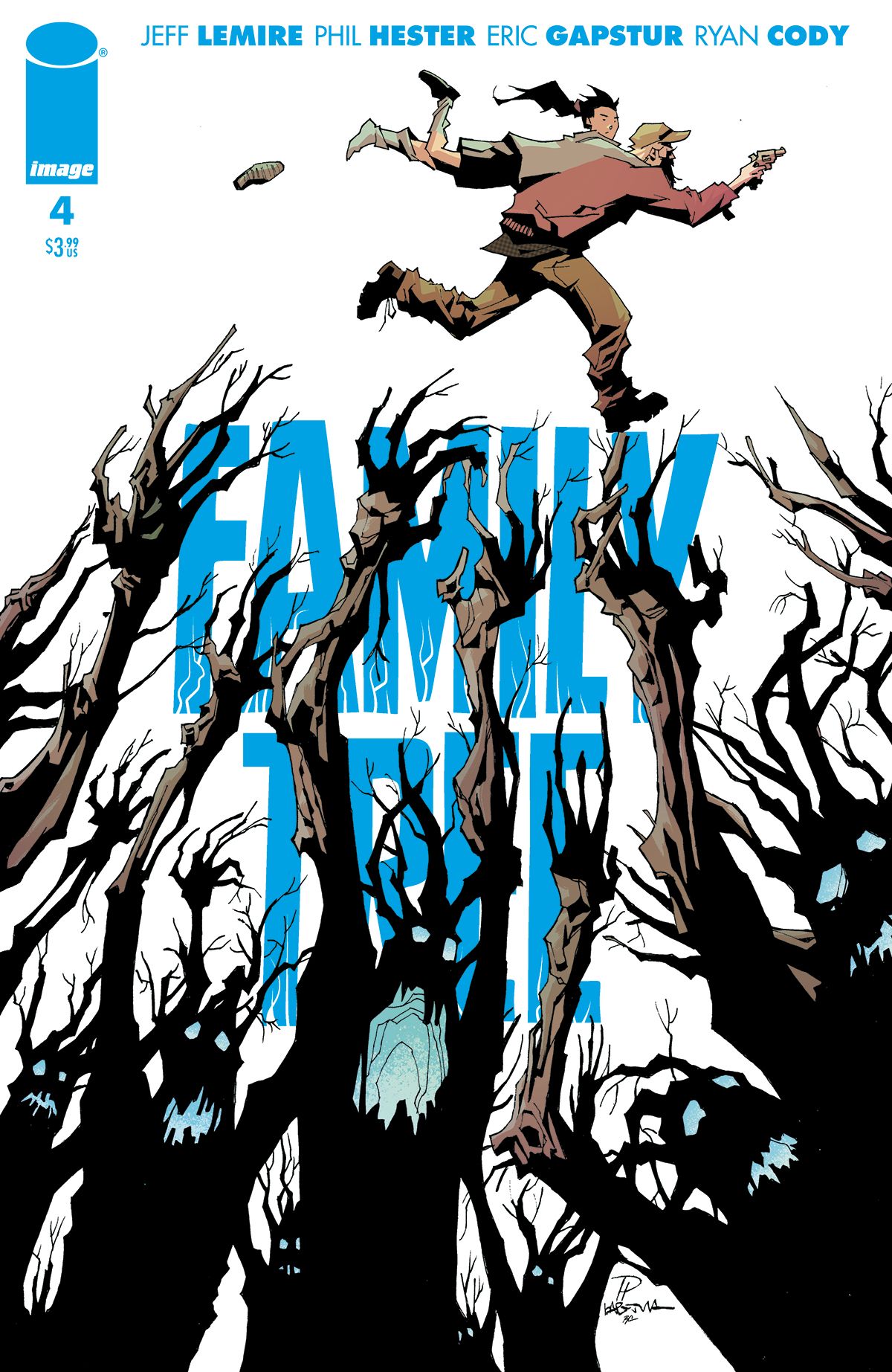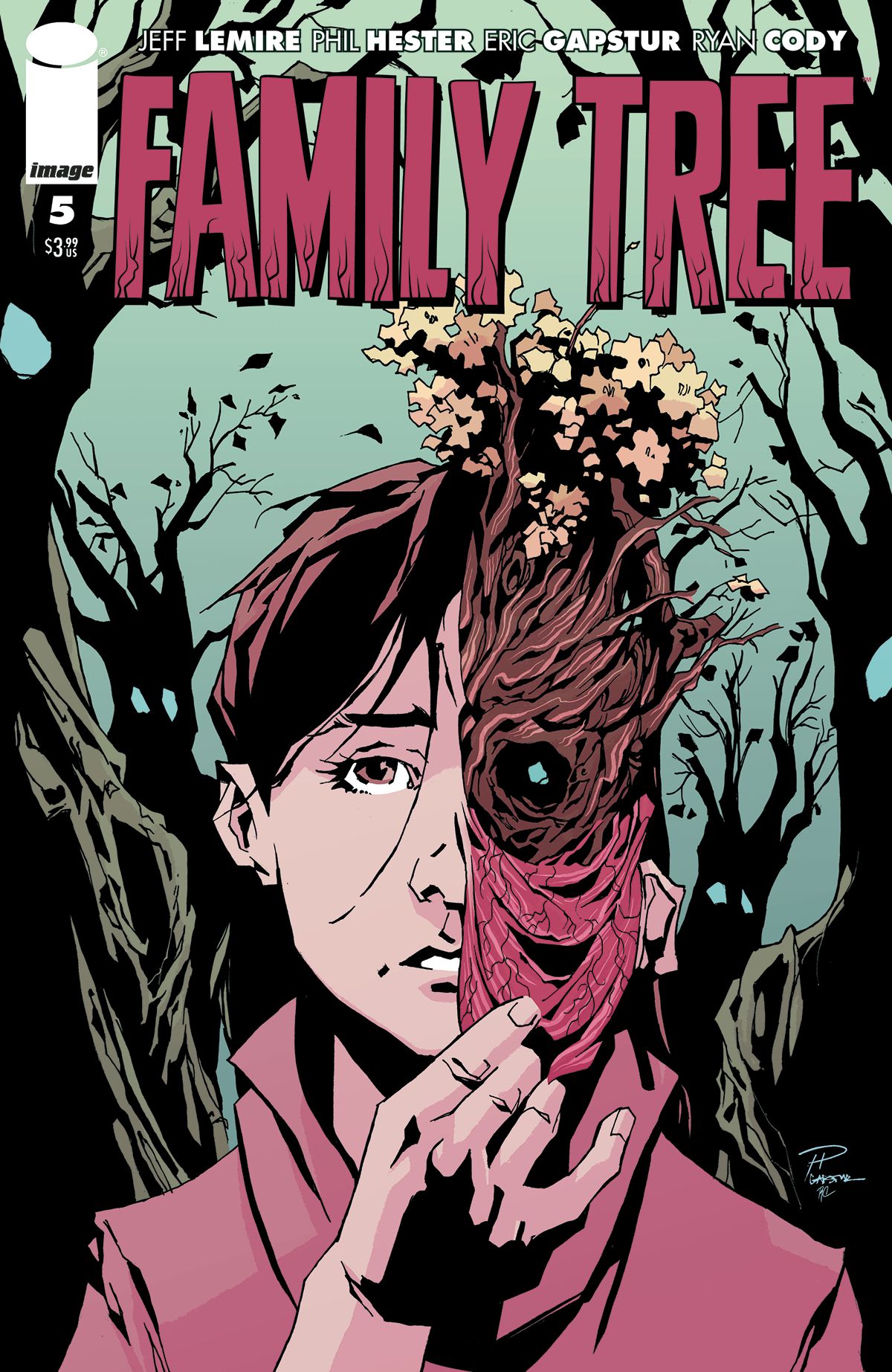On its surface, Jeff Lemire, Phil Hester, Eric Gapstur, Ryan Cody and Steve Wand's Family Tree is about the start of a world ending catastrophe that involves people turning into trees. However, the series' first four issues -- which will soon be collected into a trade paperback by publisher Image Comics -- move between horror, action and family drama, as well as through time, to paint a personal picture of the apocalypse. Family Tree is now set to move into its next stage, which will further explore just what happened to the Earth and the dysfunction of the book's main family.
CBR talked with Lemire and Hester about Family Tree's first few issues, its futures and the book's themes and ideas.
CBR: Now that the first few issues are in the books, what in Family Tree are you two most proud of so far?
Lemire: Personally, I’m just proud to have worked with Phil and Ryan and Eric and the crew to create an original story. I’ve been a fan of Phil’s for a long time, so to get the chance to create something from scratch with him is really great. That make me prouder than any one moment or aspect of the book.
Phil Hester: Having the chance to work with Jeff, frankly. I've admired his work for a while and felt we were on the same wavelength creatively, even though we'd never collaborated before. This is a very heartfelt comic, and I think my work, though it hasn't lost any of its weirdness, has brought that emotion home. It's one of a bunch of books I've been lucky enough to do lately on which I haven't had to compromise my style or aesthetic goals at all. I'm on a hot streak of good fortune.
What are you most looking forward to people seeing in the next part of Family Tree?
Lemire: I think we’ve constructed the book in a way where it will be almost impossible for anyone to predict what’s coming. There are some big leaps and huge changes that will hit the series not once, but a few times. I’m looking forward to seeing reactions to those and keeping the reader on their toes.
Hester: Just how much weirder it's going to get.
Both of you guys have worked as artists and writers on books in the past. How does that affect your collaborative process and your approach to books like Family Tree?
Lemire: I think for me, it allows me to be very hands off in terms of dictating the visual storytelling in my scripts because I knew going in that Phil was an accomplished storyteller and he would do so much with the material that I could relax the urge to direct him with layout or storytelling decisions. That freed me to focus more on character and plot.
Hester: I think we're both aware of what the other's goals are from page to page and panel to panel. Jeff knows what he's asking of artists. I know what Jeff's intent is with most scenes and shots. I have to admit, a lot of the time I'm just worried readers are resentful of me drawing it when Jeff would have knocked it out of the park with his own art. It pushes me to try new things and take approaches I may not have considered before. I have to think, "What would Jeff do?" but then find another route, stake out some new territory for both of us.
Something that really strikes me about the art in Family Tree is that, despite how gory and horrific it can be, so much of the series is carried by these moments that are a lot more quiet and personal. How do you approach balancing all of those different considerations?
Lemire: I think the best genre fiction does that. It juxtaposes horror or whatever genre elements with real human drama and with other contrasting elements that elevate it and make the horror ring even more true. If you don’t care about the characters and invest I their lives and stories, it will be very hard to care when these horrific elements threaten them. It’s just a matter of approaching genre fiction, in this case horror, from a more character driven and emotional place.
Hester: The art style is consciously claustrophobic and itchy. I think that brings it down to earth in a lot of ways. Had this book been drawn by a more literal artist it could have looked ridiculous, sort of like shooting a modern horror film on a well-lit soap opera set on video. By making everything feel creaky and tottering I hope I've sort of "trapped" the readers in with the family. They're hunkered down with these desperate people, so when catastrophe descends, it's a shared experience.
Lately, I've been thinking about the idea of horror as an expression of anxiety and a way of processing difficult issues. It also feels like in the past decade or so eco-fiction has become more prominent, particularly eco-fiction with a horror bent. I'm thinking of, for example, Jeff VanderMeer's Southern Reach Trilogy/Annihilation. In a lot of ways, Family Tree feels like it falls into that category, with this sort of apocalypse that results in plant life reclaiming Earth. Can you guys speak a bit as to why that's a topic and style you were interested in now?
Lemire: I think it’s an obvious statement on my part to say that we all live in an age of high anxiety. This was all written long before the current pandemic, and even before Covid we were all living in an incredibly stressful time. Now that is off the charts. So horror can really be an outlet for that, a way to process it and shape it into narratives that make sense to us and allow us to express it and release some of it, even for a short time. I know it does that for me as a writer, and hopefully for the readers too.
Hester: I was just interested in working with Jeff, no matter the topic. I'm glad he landed on one suited to my drawing style. As far as the relevance of apocalyptic material, I don't want to put too fine a point on it, but we're enduring a kind of slow motion apocalypse right now, even putting the pandemic aside for a second. We've done some pretty crazy things to our planet over the last century or so, it's not hard to imagine we're going to pay a price for that. I think we're tapping into that shared, amorphous anxiety.
A lot of Family Tree Vol. 1 is dedicated to exploring the dynamics of the book's main fractured family, two generations of which have had these profound, traumatic breaks with their loved ones. Talk to me a bit about this family dynamic and why it's so important to the story you're telling.
Lemire: It’s what the story is all about really, the things that can tear a family apart and also pull them closer together. A lot of my work is about that. And the horror elements here are amplified metaphors for those things. Again, it’s about giving the story an emotional core and a relatable story that readers can invest in that makes the horror stuff that much more impactful.
The end of Family Tree #5 reveals the series will, spoilers, follow Josh as one of the last people on Earth. What made you guys want to explore him more as a character?
Lemire: He was secretly the main character all along. At the start you think the book may be about Meg, or her mother Loretta, and Josh is sort of the supporting character. But then things begin to shift and you realize this has all been from his POV. That was a fun way for me to approach the storytelling and to see a character really grow and change in dramatic ways over the course of the series. And what we hint at, at the end of volume 1, is just the tip of the iceberg for Josh.
Hester: I didn't, really. I wanted the book to be wall-to-wall Judd. I only want to draw old man comics now.
Is there anything you'd like to add?
Lemire: Just that I fell in love with the character of Judd the grandpa, more than I thought I would and I had to find a clever way of keeping him present in the series after his death. That was a fun challenge and one I think and hope the reader’s will get a kick out of.
Family Tree Volume 1 goes on sale May 27 from Image Comics.




